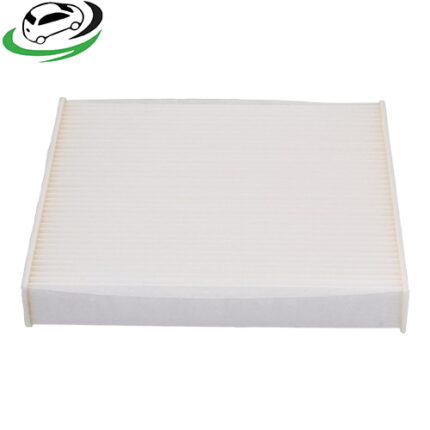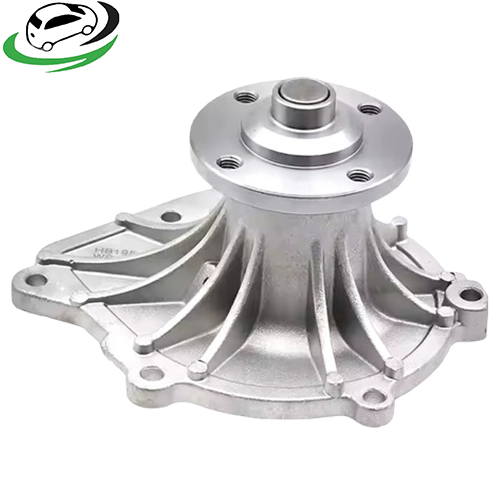Get Water Pump Assy (W/Out Housing) For 1KD-FTV / 1KZ 1KZ-TE / 2KD-FTV Engines 1611069045 in Kenya
A Water Pump Assembly (Without Housing) is a vital component in a vehicle’s cooling system, responsible for circulating coolant from the radiator through the engine block to prevent overheating. The absence of the housing in this version simplifies the component for certain types of maintenance or installation needs, though it doesn’t compromise its primary function.
1. Function of the Water Pump Assembly
The primary purpose of a water pump is to move coolant through the engine and radiator to regulate engine temperature. During combustion, engines generate significant heat, and without effective cooling, they would quickly overheat, leading to critical engine damage. The water pump assembly ensures a continuous flow of coolant through the engine, absorbing heat from the engine block, carrying it to the radiator, and returning cooler fluid back to the engine.
2. Structure and Components
A typical water pump assembly without a housing includes several integral parts that contribute to its function and longevity:
- Impeller: The impeller is a rotating component with blades designed to push the coolant through the engine block. Usually made from materials like cast aluminum or composite plastics, the impeller’s durability is key to reliable performance.
- Bearing: Bearings support the impeller and shaft, reducing friction and allowing smooth rotation. High-quality bearings prolong the lifespan of the pump and ensure consistent performance.
- Shaft: The shaft connects the impeller to the pulley, transmitting the drive from the engine’s accessory belt to rotate the impeller.
- Seals: Seals prevent coolant from leaking out of the pump, helping to maintain the system’s pressure. The seals are usually designed to withstand various temperatures and pressures without failing.
3. Operating Mechanism
In most vehicles, the water pump is powered by the engine’s drive belt. The rotation of the belt moves the pulley, which in turn spins the shaft connected to the impeller. As the impeller rotates, it pushes coolant through the engine’s coolant passages, creating a continuous flow that circulates through the radiator and engine. The radiator cools the hot coolant before it returns to the engine to absorb more heat.
4. Benefits of a Water Pump Assembly Without Housing
A water pump assembly without housing offers several benefits in specific scenarios:
- Ease of Replacement: If only the internal components, such as the impeller or shaft, need replacing, a pump without a housing can be installed quickly and efficiently, potentially lowering labor costs.
- Cost Efficiency: By not including the housing, which doesn’t frequently wear out, this version of the water pump can be more economical.
- Versatile Use: Some vehicles or machinery might only require the core water pump components for replacements, especially in cases where the existing housing is in good condition.
5. Importance in the Cooling System
The water pump assembly plays a crucial role in the cooling system, helping prevent overheating and maintaining optimal engine operating temperatures. Its ability to move coolant consistently through the engine affects overall engine performance, longevity, and fuel efficiency. If the water pump fails, the engine can quickly overheat, leading to possible engine seizure, warped cylinder heads, or even a complete engine failure.
6. Types of Water Pumps
Water pumps can vary depending on the engine’s design and the vehicle’s cooling needs. Some common types include:
- Mechanical Water Pumps: Driven by the engine’s drive belt, these pumps are common in traditional combustion engines. The rotation of the engine drives the pump, with faster speeds during higher RPMs.
- Electric Water Pumps: These are independent of the engine’s RPM and can operate based on the engine’s real-time cooling requirements. Electric pumps are common in newer vehicles and hybrids, offering improved fuel efficiency and precise cooling control.
- Auxiliary Water Pumps: Found in some vehicles with turbochargers or auxiliary cooling needs, these smaller pumps assist the primary pump in cooling critical components.
7. Signs of a Faulty Water Pump
A water pump is a long-lasting component, but like all mechanical parts, it can wear out over time. Here are some common signs indicating that a water pump may need replacement:
- Coolant Leaks: If you see coolant leaking near the engine bay, particularly around the water pump area, it could be due to worn seals or a faulty pump.
- Overheating Engine: An overheating engine is a major indicator of a failing water pump. If the pump isn’t circulating coolant properly, the engine temperature will quickly rise.
- Whining or Grinding Noise: Worn bearings in the water pump can cause a whining noise, especially as the RPMs increase.
- Steam from the Radiator: When a water pump isn’t functioning, coolant can become excessively hot, causing steam to escape from the radiator cap or reservoir.
8. Installation Process
Replacing a water pump assembly (without housing) involves some technical skill and specialized tools. Below is an overview of the installation process:
- Prepare the Vehicle: Ensure the vehicle is cool, then disconnect the battery for safety. Drain the coolant from the radiator to prevent spillage during removal.
- Access the Water Pump: In many vehicles, other components such as the fan, belts, and possibly the radiator need to be removed to reach the water pump.
- Remove the Old Pump: Disconnect any hoses and unbolt the water pump from the engine block. Carefully detach the pump without damaging the surrounding components.
- Clean the Mounting Surface: Once the old pump is removed, clean the engine block surface to ensure a proper seal with the new pump.
- Install the New Pump: Place the new pump assembly (without housing) onto the mounting surface, secure it with bolts, and reattach the hoses.
- Refill the Coolant: Once the pump is installed, refill the radiator with coolant and check for leaks.
- Test the Installation: Start the vehicle and monitor for any signs of leaks or overheating, ensuring the new pump is functioning correctly.
9. Maintenance Tips
To keep the water pump in good condition, regular maintenance of the entire cooling system is essential. Here are some tips:
- Check Coolant Levels: Regularly inspect coolant levels and top up when necessary. Low coolant levels can strain the water pump and cause it to fail prematurely.
- Flush Coolant: Over time, coolant can break down and lose its effectiveness. Flushing the system and replacing the coolant every 30,000-50,000 miles is advisable.
- Inspect Belts: Since many water pumps rely on the drive belt, checking for worn or cracked belts can prevent pump failure.
- Monitor for Leaks: Regularly inspect for coolant leaks around the water pump area. Catching a small leak early can prevent larger, more expensive problems.
10. Environmental Impact and Disposal
The environmental impact of water pumps primarily comes from their disposal. When replacing a water pump, the old pump should be properly disposed of, particularly due to the potential presence of coolant and metal components that can harm the environment. Many auto shops recycle or safely dispose of these parts, making it easier to reduce the environmental footprint of the replacement.
11. Choosing a Quality Water Pump Assembly (Without Housing)
When selecting a water pump assembly, especially without housing, keep the following factors in mind:
- OEM Compatibility: Choosing an OEM-compatible part ensures that the pump will fit and function as intended within the vehicle.
- Material Quality: Look for high-quality materials, especially for components like the impeller and bearings, which are subject to constant motion and wear.
- Brand Reputation: Established brands are generally more reliable due to their rigorous testing and quality control standards.
- Warranty and Support: A good warranty can offer peace of mind and some financial security in case of premature failure.
Conclusion
A Water Pump Assembly (Without Housing) is essential in maintaining engine temperature, performance, and longevity. It plays a critical role in circulating coolant, which allows the engine to run at optimal temperature. With proper maintenance, attention to signs of wear, and adherence to replacement guidelines, a water pump assembly can continue to deliver reliable performance over time.
Follow us on Facebook for more parts.




Reviews
Clear filtersThere are no reviews yet.